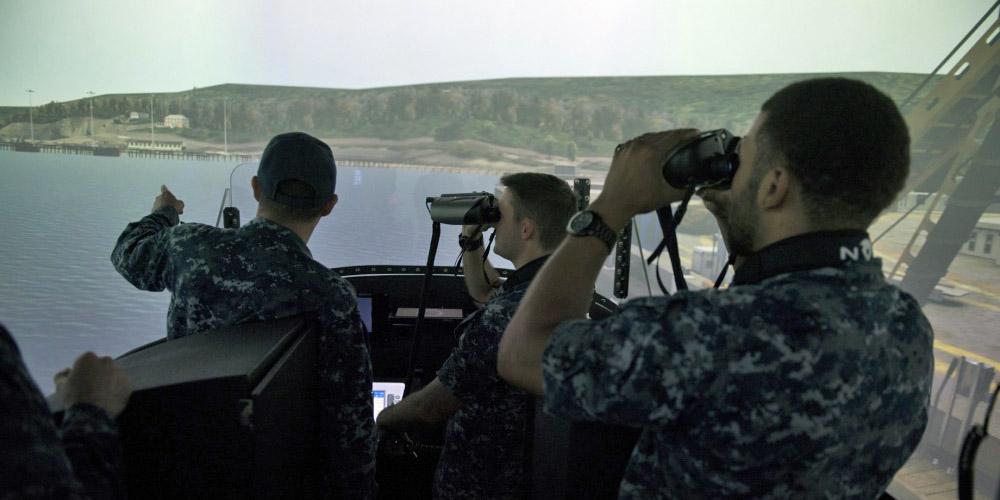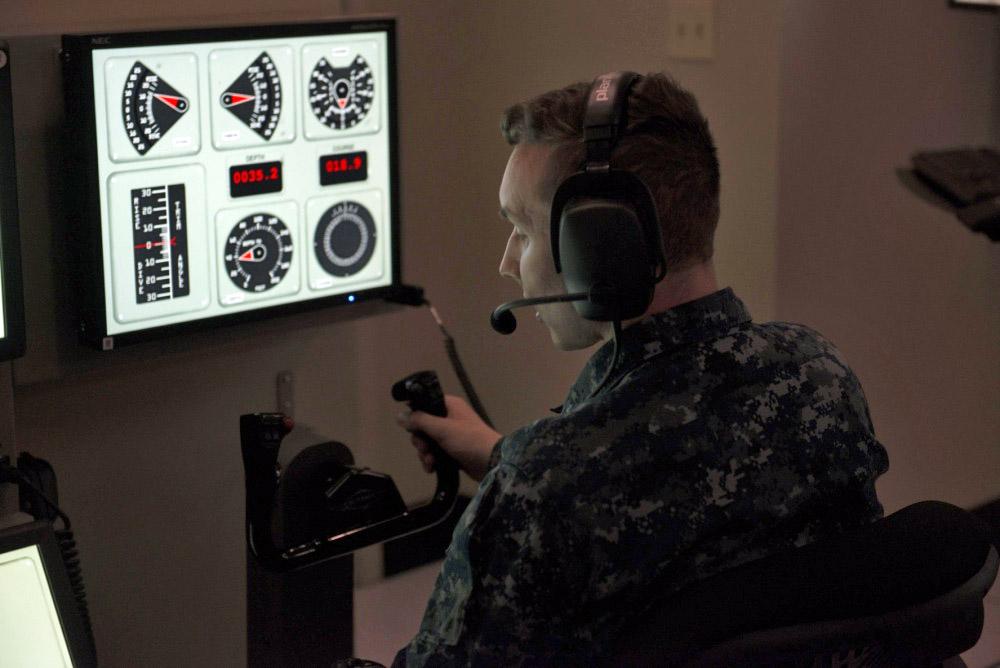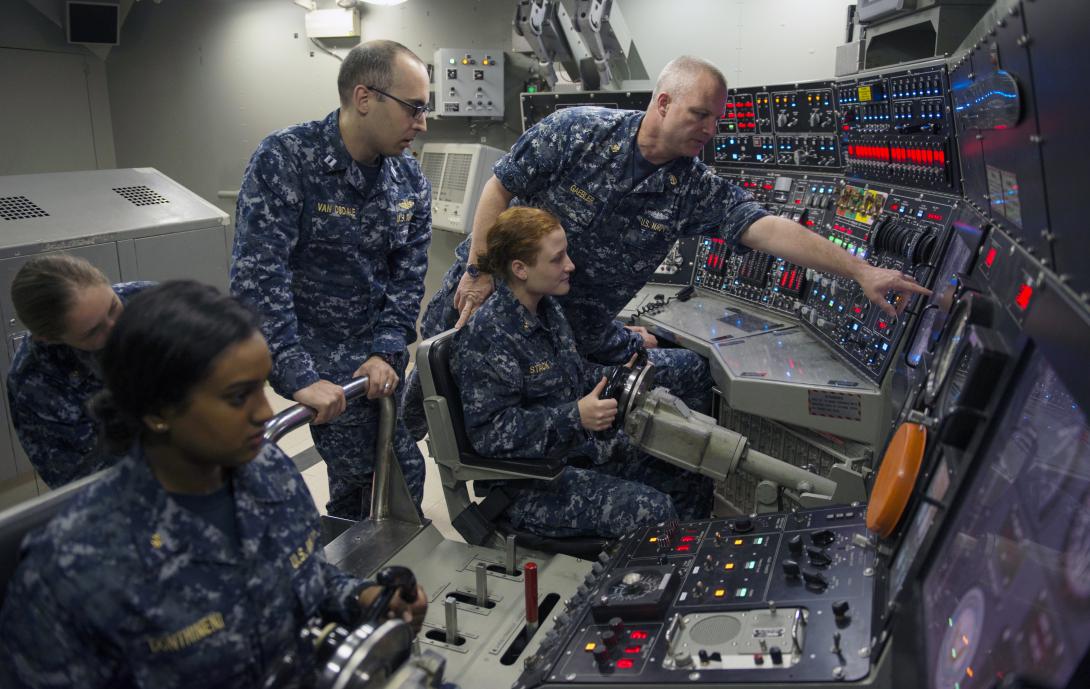Submariners Train to Sail on Land
A new submarine bridge trainer recently unveiled at the Trident Training Facility in Bangor, Washington, gives submarine bridge team members a learning experience through interaction with a complex visual and auditory environment.
"This is by far the most advanced trainer that I have experienced at TRITRAFAC [Trident Training Facility] Bangor," said Fire Control Technician 2nd Class Christopher Goetz, USN, assigned to USS Ohio Gold Crew, the test submarine crew for the new trainer. "With the 360-degree view, the vibrations you feel while on the bridge, the realistic wind and climate changes and the high-tech binoculars that let you see into the distance, it really prepares you for being on a real submarine.”
In the near life-size mockup of a generic submarine sail, trainees experience navigating, piloting and mooring the boat to and from a pier in a 360-degree horizontal and 70-degree vertical dynamic environment. The training platform features relevant ship sensors and systems and includes 18 channels of visual imagery and 16 channels of 3D sound. A dual attack center has been completed that will provide the ship systems and periscopes required for surfaced events.
Capt. John Fancher, USN, commanding officer of TRITRAFAC Bangor, says the facility provides world-class training to the submarine crews stationed in the Pacific Northwest. "What you see here today is a new incredible facility that blows me away. I am so excited about the capability this new trainer brings to the submarine force and the increased ability that they will have to maintain their proficiency and safely navigate out of port."
Rear Adm. John Tammen, USN, commander, Submarine Group 9, was on hand for the opening of the new trainer. "What we are doing here today is making the long-term investments needed to make sure that we stay at the top of our game," Adm. Tammen said during the ribbon-cutting ceremony. "Today's strategic deterrence is not what it was in the ’80s. There are a lot more adversaries out there, and we are not resting on our laurels as we wait for Ohio replacement.
“What we are doing is continuing to invest in our future and the most important part of our future is the people,” the admiral continued. “So we are making this investment into this state-of-the-art bridge trainer to make sure that our crews, when they throw off that line, are ready to do their mission.”
Four submarine bridge trainers have been approved for construction throughout the fleet. Steve Stephenson, technical on-site agent for Naval Sea Systems Command, explains that this is the first guided missile and ballistic missile submarine bridge trainer design; the sail and dome are larger than the two previous trainers and the engineering development model. It is also the first to receive the new laser projectors that operate up to 30 times longer than the previous projectors with significantly less maintenance, he adds.
TRITRAFAC Bangor plans to have the Blue and Gold crews assigned to the guided-missile submarines USS Ohio and USS Michigan certified through the trainer this year.







Comments